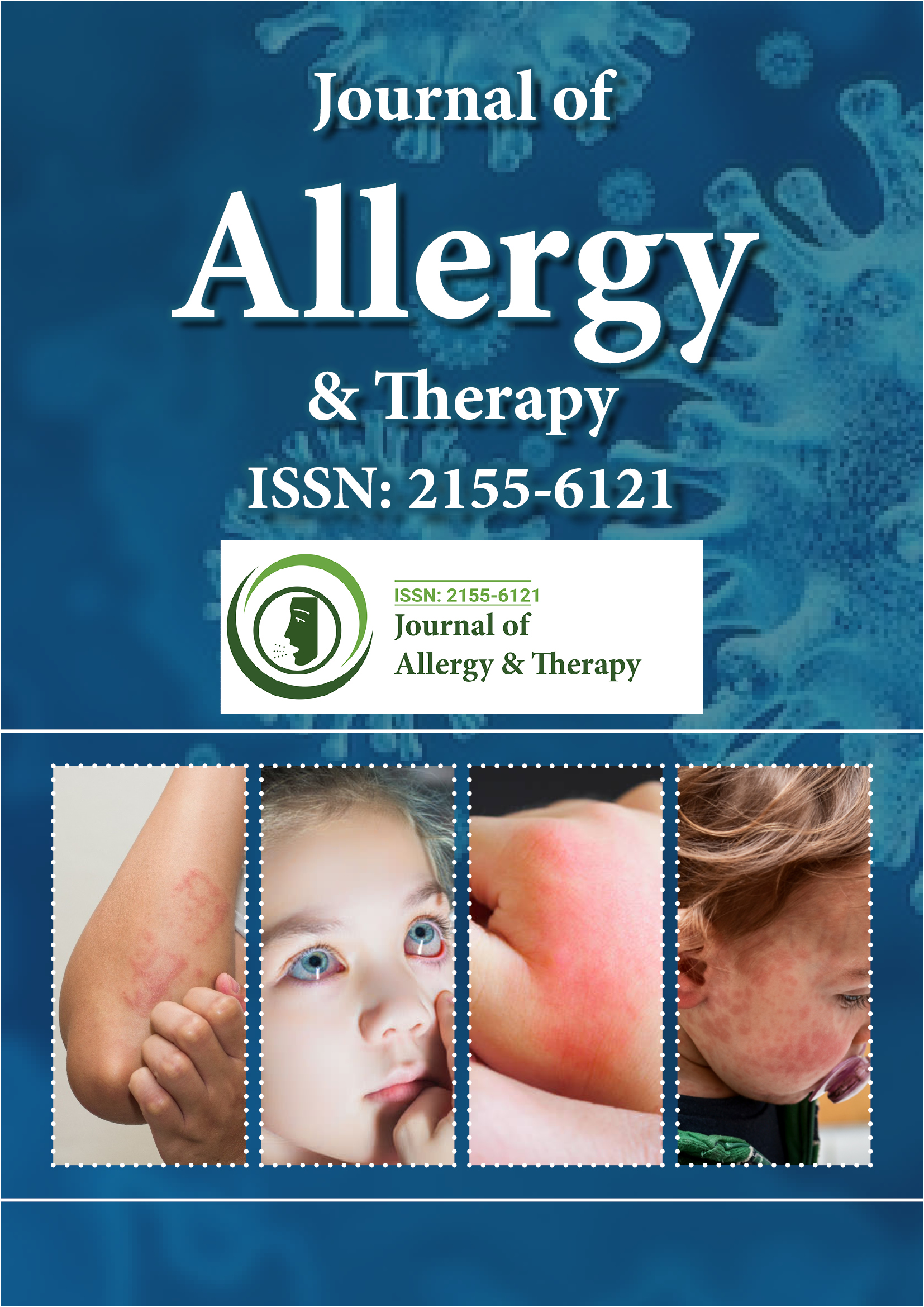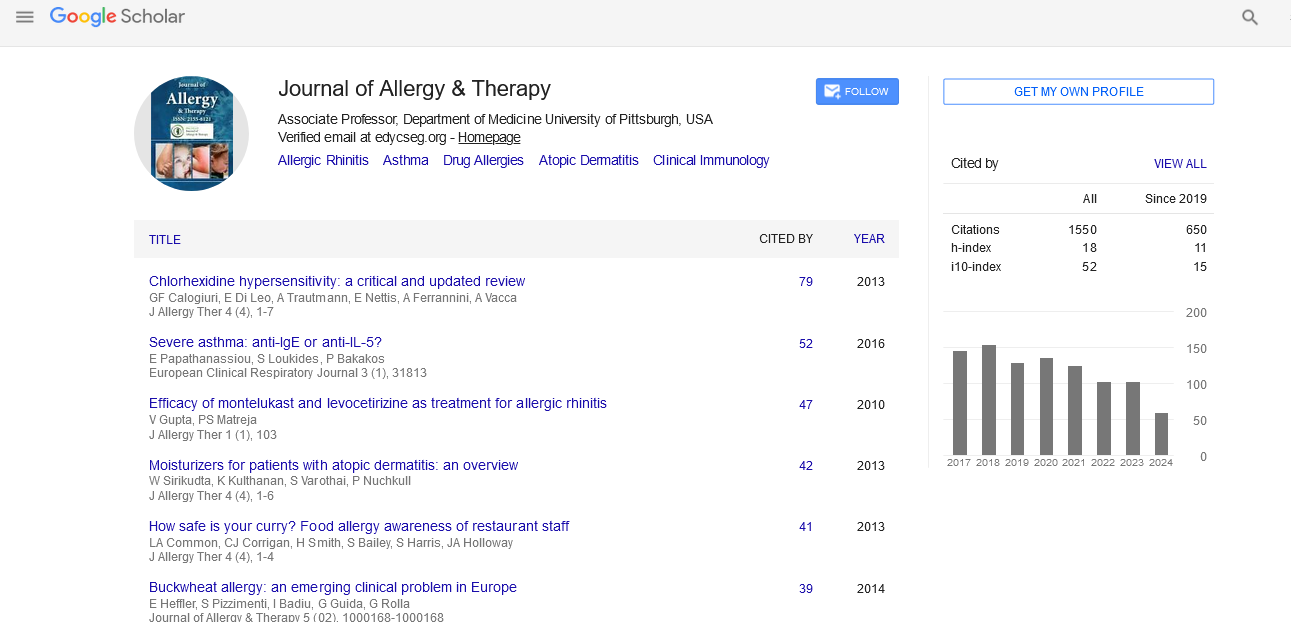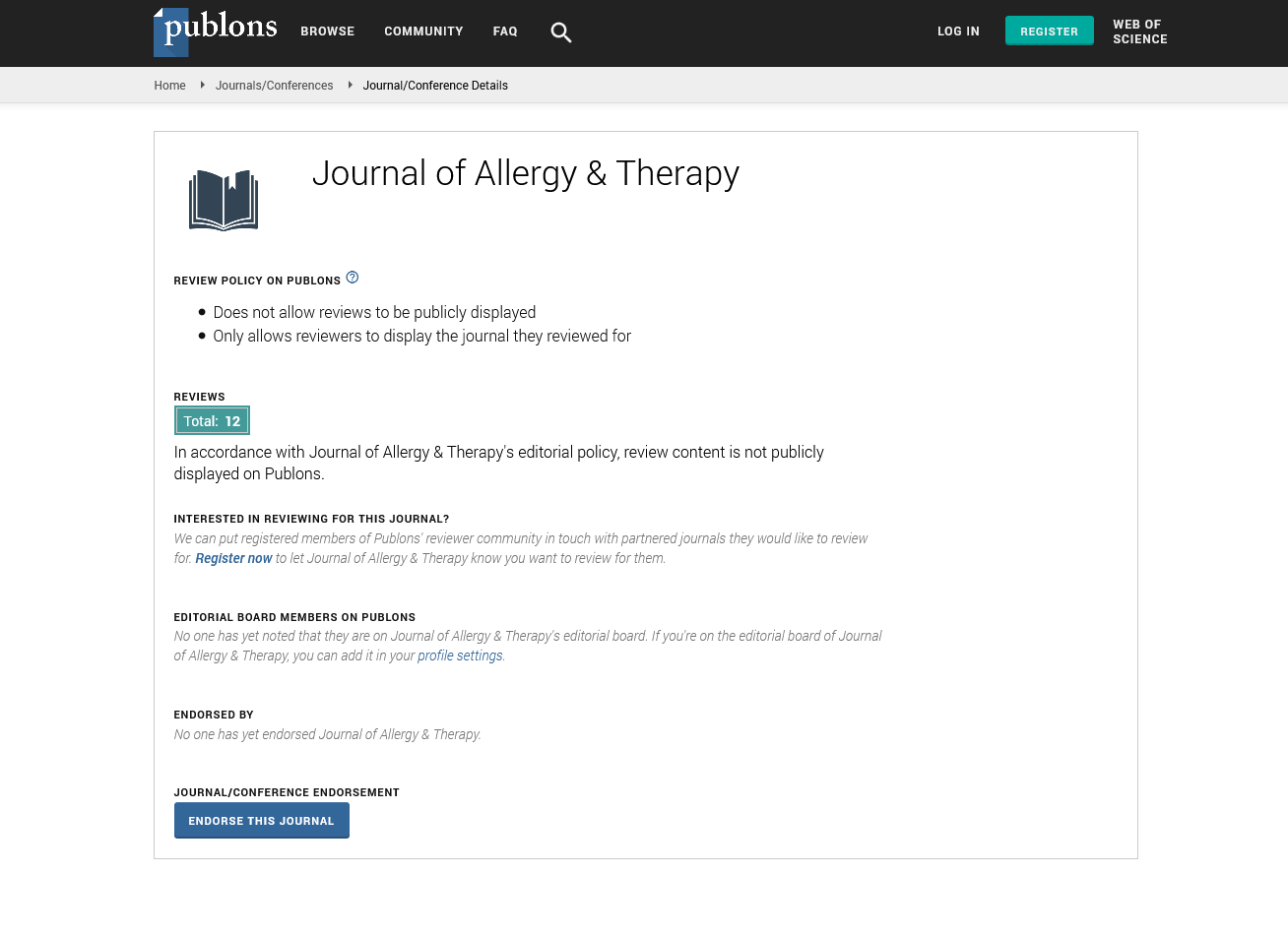PMC/PubMed Indexed Articles
Indexed In
- Academic Journals Database
- Open J Gate
- Genamics JournalSeek
- Academic Keys
- JournalTOCs
- China National Knowledge Infrastructure (CNKI)
- Ulrich's Periodicals Directory
- Electronic Journals Library
- RefSeek
- Hamdard University
- EBSCO A-Z
- OCLC- WorldCat
- SWB online catalog
- Virtual Library of Biology (vifabio)
- Publons
- Geneva Foundation for Medical Education and Research
- Euro Pub
- Google Scholar
Useful Links
Share This Page
Journal Flyer

Open Access Journals
- Agri and Aquaculture
- Biochemistry
- Bioinformatics & Systems Biology
- Business & Management
- Chemistry
- Clinical Sciences
- Engineering
- Food & Nutrition
- General Science
- Genetics & Molecular Biology
- Immunology & Microbiology
- Medical Sciences
- Neuroscience & Psychology
- Nursing & Health Care
- Pharmaceutical Sciences
Commentary - (2022) Volume 13, Issue 12
Association Between Children's Asthma Attack Predictions and Asthma Control Predictors
Yang Kaplan*Received: 28-Nov-2022, Manuscript No. JAT-22-19229 ; Editor assigned: 02-Dec-2022, Pre QC No. JAT-22-19229 (PQ); Reviewed: 16-Dec-2022, QC No. JAT-22-19229 ; Revised: 23-Dec-2022, Manuscript No. JAT-22-19229 (R); Published: 30-Dec-2022, DOI: 10.35248/2155-6121.22.13.318
Description
The main objective of asthma treatment is disease management, which is defined as the absence of repeated symptoms interfering with sleep or everyday activities and prevention of severe attacks necessitating emergency medical consultations. Only 50% of youngsters are able to effectively control their condition. It's critical to spot kids who are susceptible to inadequate symptom management and asthma episodes in order to avoid both shortand long-term repercussions. Ineffective symptom management restricts daily activities and negatively impacts quality of life, while asthma episodes can be stressful, expensive for the patient and the healthcare system, and pose a danger of death and longterm damage, such as loss of lung function. With closer monitoring, avoidance of triggers, improved inhaler technique, treatment adherence, and asthma therapy changes, symptom control may be improved and asthma episodes may be prevented. There are currently no prediction methods for use in clinical care, thus it is still unknown how to identify young children who are at risk of having trouble controlling their symptoms and having asthma episodes.
Numerous studies have shown factors that predict long-term symptom management or asthma episodes. They had restrictions, though. Recall bias limits the majority of studies on symptom control in kids to cross-sectional surveys. On the other hand, research that describe asthma attack predictors are numerous and generally prospective in nature. To identify children at risk of asthma attacks, some authors have aggregated single variables into prediction scores, however none of the scores have been used in clinical practice. Few studies examined both asthma attacks and poor symptom control factors simultaneously. Only two prospective trials examined factors that could predict both attacks and symptom control in the same group of kids.
Both studies included a relatively small number of respiratory symptoms as potential indicators, one using data from a US Randomized Controlled Trial (RCT) and the other from a primary care setting in the UK. Both research discovered different predictors for the two outcomes, which may be the result of various pathogeneses at play. Short-Acting β2-Agonists (SABA) are effective in improving symptom control and are associated with greater airflow limitation and diurnal variability. Despite effective symptom management, asthma episodes can still happen. They are characterized by increased airway inflammation, decreased SABA reactivity, and little diurnal fluctuation. The assessment and management of these two distinct outcomes as distinct, curable features as well as their independent investigation have been advised by experts.
In this study, we observed that kids at risk for poor asthma control. Few (7%) individuals were at risk for both, poor symptom control at baseline, wheeze driven by allergens, colds, and activity, a more intensive baseline therapy, a history of preschool, persistent wheezing, and exposure to cigarette smoking all predicted suboptimal asthma management at followup. The baseline history of severe wheezing episodes and previous asthma attacks, as well as the younger age, non-Swiss ancestry, and lack of a paternal asthma history, all predicted incident asthma attacks. At baseline, lung function and sensitization were not linked to poor control or asthma attacks a year later.
Citation: Kaplan Y (2022) Association Between Children's Asthma Attack Predictions and Asthma Control Predictors. J Allergy Ther. 13:318.
Copyright: © 2022 Kaplan Y . This is an open access article distributed under the terms of the Creative Commons Attribution License, which permits unrestricted use, distribution, and reproduction in any medium, provided the original author and source are credited.


